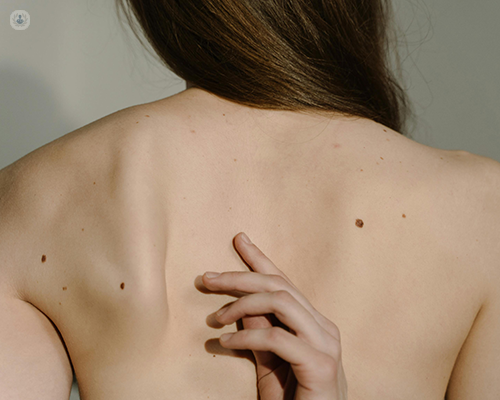Mole mapping: Early detection for melanoma
Autore:In dermatology, mole mapping is an innovative technique that leverages technology to systematically document individual moles, facilitating comprehensive tracking over time.
Here, Dr Paul Farrant, renowned consultant dermatologist and dermatological surgeon, offers his expert insight into the key aspects of mole mapping and its significance in melanoma detection.

What is mole mapping, and how does it differ from traditional methods of monitoring?
Traditionally, a clinical examination of individual moles with the use of a dermatoscope (magnification device) is used to determine if a mole is suspicious or not. However, melanoma can look like a very ordinary mole and, likewise, a very odd-looking mole can be entirely benign and harmless. Some patients also have lots of moles, and sometimes many of these are larger or atypical in appearance.
A cancerous mole is, by definition, a mole that is changing. With time, this therefore manifests as a change in the appearance of the mole.
Mole mapping is a process that photographs and tracks moles over time to determine which moles are actually changing. Modern mole mapping uses automated machines to take a standard set of close-up dermoscopic (clinical detailed) images, and then uses software to compare these images over time. These machines thus highlight any changing or new moles.
What are the benefits of mole mapping for early skin cancer detection?
Mole mapping is the best way to detect changes in moles which could signify melanoma, the most serious type of skin cancer. Melanoma is the biggest cause of cancer death in young adults. When it is caught at an early stage, most patients are cured by having the mole removed surgically. However, it is the moles that are missed or that present later that cause most of the health issues, complications, and death.
How often should patients undergo mole mapping, and what factors determine frequency?
The frequency of mole mapping depends on the individual. If there are some concerning moles at baseline, it may be recommended to have a repeat scan after 4 - 6 months. For general screening purposes, however, an annual scan is sufficient for most patients and if there is very little change this can be relaxed further, for example every 2 years.
What technology is utilised in mole mapping, and how does it enhance accuracy?
There are very basic manual systems to connect a dermatoscope to a camera phone or camera, and manually link this to a background body photo. However, there is no standardisation or use of automatic software to track moles accurately with this approach.
More commonly, mole mapping refers to a whole body tower device that takes images at a certain distance with a high-quality camera and using a special polarised lighting against a neutral background. This is then paired with high-quality dermoscopic images linked to the sites on the background map. This way, the machine can track individual lesions from one visit to the next.
Can mole mapping identify skin conditions beyond melanoma, and if so, how does it aid diagnosis and treatment?
The whole body machines pick up every blemish on the skin, after which the operator then needs to determine which are significant to take close-up images.
Mole mapping can detect other types of skin cancer, but primarily it is a system used to track moles and detect melanoma at an early stage. In the case that other cancers are picked up, then these too can be treated at an early stage.
To schedule an appointment with Dr Paul Farrant, head on over to his Top Doctors profile today.


